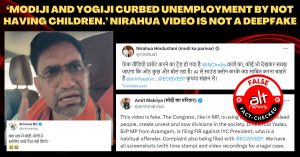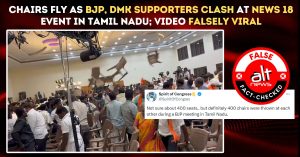‘Politics makes strange bedfellows’ is a saying that is vindicated to a not insignificant extent by the close nexus between mainstream media and politicians. The fourth pillar of democracy whose role is to question the powers that be and report events in an unbiased and sensitive manner has mostly succumbed to the diktats of the establishment. Nothing epitomises this state of affairs more than the video below.
Uttar Pradesh government withdraws 22-year-old case against @myogiadityanath https://t.co/eQRVtEo6F6 pic.twitter.com/PuY8v1KRIf
— NDTV (@ndtv) December 27, 2017
In this clip, a reporter of Asian News International (ANI) can be seen touching the feet of U.P CM Yogi Adityanath. This gesture of reverence on the part of the reporter is indicative of the soft stance of mainstream media organisations with regard to political leaders and parties, as also the skewed reportage of news by these organisations by virtue of their proximity to the political class.

Adityanath became the poster boy of Indian media after he was appointed the CM of Uttar Pradesh following BJP’s emphatic win. Journalists went gaga over everything from his bald pate to his pet dog to what he eats.

Journalists who dissed Donald Trump at the drop of a hat over his divisive agenda were far more accomodating with the U.P CM despite the latter’s blatantly communal rhetoric.

Journalists are now no longer coy about flaunting their admiration for and proximity to political figures. Earlier this year, Prime Minister Narendra Modi was mobbed by journalists who were keen on taking a selfie with him at the annual Diwali Milan gathering at the BJP headquarters in New Delhi. The video posted below is of the gathering that took place in 2015.
PM Modi mobbed by media in selfie frenzy at Diwali Milan in party’s headquartershttps://t.co/ks2XVaSCq9
— NDTV (@ndtv) November 28, 2015
The photographs of fawning reporters swarming around PM Modi is telling. The Prime Minister has not conducted a single press conference in over three years in office. Instead of questioning the PM and his party, journalists at the gathering were more than content to click selfies.

A strong quid pro quo exists between the political establishment and mainstream media. According to the reply given to an RTI application filed this year, the Central Government spent more than Rs.3700 crore in the last three years on advertising in print, radio and television. It is claimed that those organisations which refuse to toe the official line are not given Govt advertisements.
Yes they should actually to ask why NDTV isnt getting any ‘official’ ads.Speaking truth to power has its financial costs & we’re paying it https://t.co/IkHRLBQWo7
— sonia singh (@soniandtv) December 19, 2017
It is thus not surprising that the majority of mainstream media choose to not only refrain from asking uncomfortable questions but often actively set an agenda for reporting that is blatantly asymmetric. On the other hand, reports that portray the government in poor light are given a quiet burial.
Alt News had earlier reported how certain news channels were working overtime before the Gujarat assembly election to bolster the image of the Government while at the same time maligning the opposition parties and those from civil society who disagree with the official narrative. A pliant media indebted to big money and patronage from Government and corporate houses can seldom be expected to take an independent stand on issues. This is reflected in the World Press Freedom Index where India ranks a lowly 136 out of 180 nations owing to self-censorship with regard to news that could flinch the establishment.
Independent journalism that speaks truth to power and is free of corporate and political control is possible only when people start contributing towards the same. Please consider donating towards this endeavour to fight fake news and misinformation.




